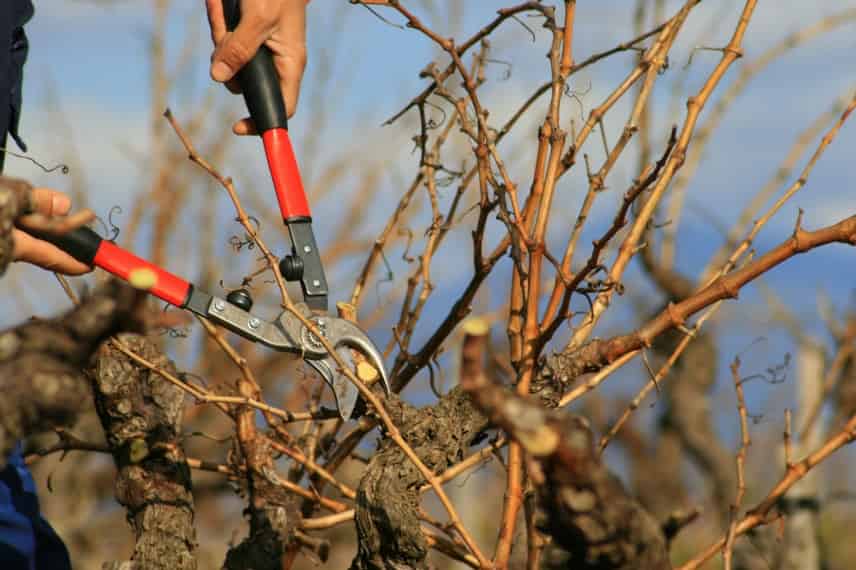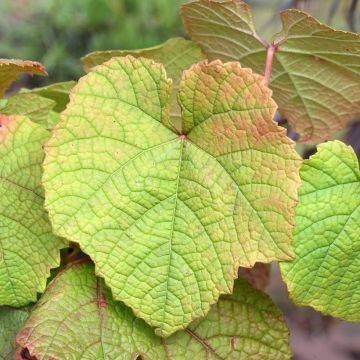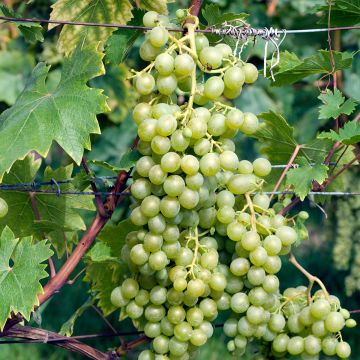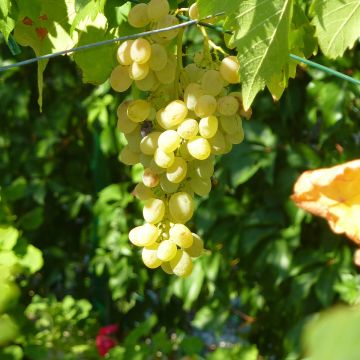
Grapevine: Planting, Pruning and Care
Our tips for a bountiful grape harvest
Contents
Growing one or more grapevines in your garden (and even in pots) and harvesting your own grapes is entirely possible, in many regions. Indeed, the grapevine is a beautiful, hardy climbing plant that fruits quite easily provided it’s planted in the right spot and properly pruned. Discover all our tips for successful cultivation!
Where to plant a grapevine?
To plant your grapevine, choose a sunny spot, ideally south-facing, and sheltered from strong winds. Grapevines thrive in warmth and need plenty of sunlight to produce sweet, well-ripened grapes. Also consider your local climate when selecting the right variety: early-ripening types like Chasselas or Muscat are better suited to cooler regions, particularly in northern France.
The soil plays a crucial role in grapevine cultivation. It prefers light, well-drained, and preferably limestone-rich soil, though it can tolerate clay soils as long as water doesn’t stagnate. If your soil is too compact or heavy, adding sand or gravel can improve drainage.
Grapevines need a support structure to climb. You have several options depending on your preferences: they can cover a wall, adorn a garden shed, or provide shade over an arbour, pergola, or fence. Beyond being ornamental, they can enhance and define different areas of your garden.
Finally, if space is limited or you want to enjoy homegrown grapes in the city, grapevines grow very well in pots. Install them with a suitable trellis on a balcony or terrace, and you can savour your own clusters of grapes right at home.

Bunch of grapes
When to plant a vine?
The ideal time to plant is in autumn, preferably between October and November. This period is perfect as it allows the vine to develop its roots before the arrival of intense summer heat, ensuring better establishment in spring. If you miss this window, it is also possible to plant the vine in winter, provided you choose a time when there is no frost. Frost can indeed damage young roots and hinder the plant’s growth.
Planting in spring is also an option, but it requires particular attention to watering, especially in the first few weeks, as conditions may be drier and the heat more intense.
Discover other Grapevines
View all →Available in 1 sizes

Available in 1 sizes
Available in 1 sizes
Available in 1 sizes
Available in 1 sizes
Available in 1 sizes
Available in 1 sizes
Available in 1 sizes
Available in 1 sizes
Available in 1 sizes
How to plant it?
To successfully plant your grapevine:
- Dig a hole 50 cm wide and deep
- Place well-rotted compost or potting soil at the bottom, mixed with garden soil,
- Position the plant, ensuring not to bury the graft union (3 to 5 cm above ground level)
- Fill in with soil
- Water generously
An initial pruning is necessary at planting time:
- Cut above the 2nd bud to encourage the growth of 2 shoots
- At the end of the following winter, keep only one shoot—the most vigorous—and tie it to a stake. Remove the buds located at the base of the vine.
How to prune grapevines?
Training Pruning:
There are several ways to train a grapevine.
The simplest method is to form a horizontal cordon, by bending the most vigorous shoot from the planting pruning to the desired height and training it along a support. The buds on top should be spaced 25 to 30 cm apart. A grapevine should be around 2 metres long to produce good-quality grapes.
You can also train a two-armed cordon, by selecting two buds placed opposite each other, then training one cordon horizontally to the left and another to the right.
Finally, another option is to build a vertical framework (up to 2 or 3 metres) and train the shoots horizontally or in a fishbone pattern.
Fruiting Pruning (in late winter):
This pruning is carried out before vegetation resumes but after severe frosts, i.e., in February or March depending on the region.
Grapes bear fruit on the current year’s shoots, which grow from the previous year’s branches. It is not possible to distinguish between fertile and sterile buds, so it is necessary to identify the fruiting canes to remove them and the replacement canes, which will be shortened.
In the first year, prune according to the variety:
- Above the 2nd bud (varieties like Chasselas),
- Above the 3rd bud (Muscat, for example),
- Above the 4th bud (thick-wooded varieties).
If you prune to 4 buds, remove the 2nd and 3rd buds (similarly, for pruning to 3 buds, remove the 2nd bud).
This pruning will produce a fruiting cane and a replacement cane.
Then, each year, cut back the canes that have already fruited.
Shorten the replacement canes by pruning above the 2nd, 3rd, or 4th bud depending on the variety, and remove intermediate buds if necessary, as in the first year. On these replacement canes, the last bud (2nd, 3rd, or 4th) will produce a new fruiting cane, while the first bud will form a replacement cane.
Summer Pruning (in late spring):
In May-June, remove the “suckers” growing in the leaf axils or along the vine. Remove small clusters. Pinch back the shoots after the 2nd leaf following the last retained cluster.

Winter pruning of grapevines – Photo: Jean-Louis Zimmermann
How to care for it?
During the first few years, while it’s getting established, the grapevine needs regular watering. Once established, it will become drought-resistant and won’t require watering. Be sure to water at the base, avoiding wetting the foliage, to prevent the development of fungal diseases.
You can also enrich the soil with ground horn or iron chelate every 2 to 3 years.
To prevent weeds from growing around the base of your grapevine, we recommend applying mulch, especially during the first few years.
Grapevines are susceptible to several diseases, including downy mildew and powdery mildew. As a preventive measure, spray with Bordeaux mixture, sulphur, or horsetail manure tea, as preferred.
- Subscribe!
- Contents











































Comments